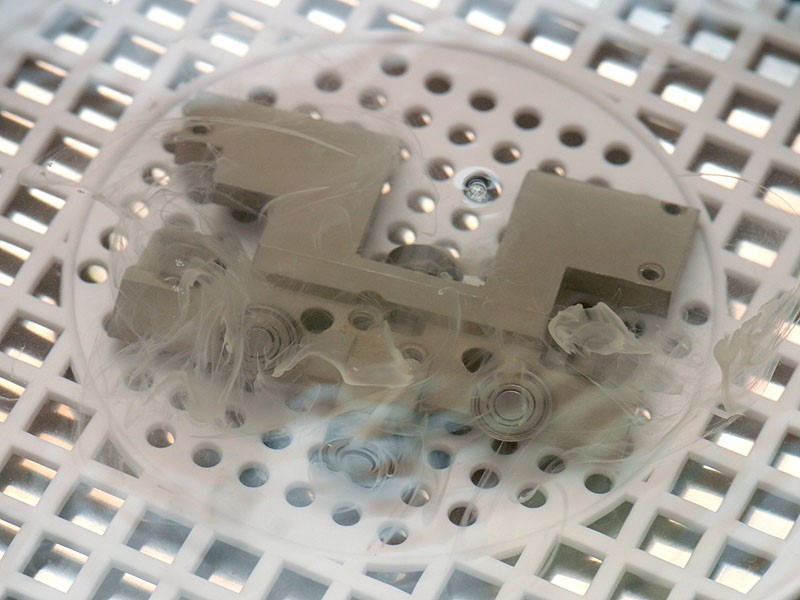With their wide range of aqueous cleaning products and industry-leading cleaning expertise, ArmaKleen takes pride in finding solutions for all types of commercial and industrial cleaning challenges. There are several factors to consider when setting up an effective parts cleaning operation, so when clients report that their parts aren’t getting cleaned as expected, ArmaKleen’s approach is to examine the whole cleaning process that the client has in place. Temporary “quick fixes” — e.g., adding a defoaming agent to address a foaming problem — may be fine for the short term, but lasting solutions often require a more significant process change.
Some of the key questions to consider when examining one’s parts-cleaning process include:
- What materials comprise the parts to be cleaned?
- What type of contaminants need to be removed?
- Which cleaning agent is being used?
- Which cleaning technique is being employed?
- What time frame is being allotted for cleaning to be complete?
Each one of these is a significant factor that can affect success and is examined below in more detail.
Materials, Contaminants and Cleaning Agents
There is no “one-size-fits-all” cleaning solution, which is why ArmaKleen manufactures numerous cleaning agents designed for a variety of materials and contaminants. While multi-purpose cleaners such as ArmaKleen’s 4 in 1 Cleaner and the new Bio 24 are excellent for removing grease and oil. Softer metals like aluminum engine parts contaminated with baked-on carbon would need a low-pH solution such as ArmaKleen’s new M-100 BCR. The full range of ArmaKleen’s products — rust inhibitors; paint and ink removers; cleaners for both ferrous metals and sensitive alloys; and many more — can be found here.
Cleaning Technique

Different types of parts require different cleaning techniques. Take, for example, parts with tortuous geometries such as tubes, channels or anything with nooks and crannies. A spray-washing approach is unlikely to be effective, because the contaminants are typically hidden from the machine’s “line of sight.” The cleaning agent may not get sprayed directly onto the contaminated area, which means that no mechanical cleaning force is applied; in some cases, the cleaner may not even drip onto the area to be cleaned.
At the same time, while an ultrasonic bath technique provides greater immersion than spray-washing, it is not recommended for all materials. An ultrasonic bath can effectively fracture baked-on carbon contamination on steel parts, but the surfaces of aluminum parts are vulnerable to the bath’s sound waves. These surfaces can be “starred” — i.e., marked with star patterns radiating out from the point of maximum energy contact. This represents a significant problem if the parts are to be used in remanufacturing. A spray under immersion technique, by contrast, will protect the delicate aluminum while providing effective immersion cleaning power; this scenario is another application for ArmaKleen’s M-100 BCR.
Time Frame
Changing one’s process may involve a different way of thinking about time frame. There are, for instance, techniques that will eventually work to get a part clean — but they might take a matter of hours, whereas the client is seeking a solution measured in minutes. By introducing a disruptor technique such as automation, throughput can be increased to approach one’s cleaning goals from a different angle.
For example, consider a situation where cleaning a part takes three hours — but the current process in place allows only 30 minutes per part. Within that three-hour window, the client should be able to clean six parts – not just one. But by introducing automation to clean those same six parts simultaneously over the course of those same three hours, a net 30-minute goal is achieved.
Summing Up
An effective parts-cleaning process is comprised of many factors, which is why a full examination is warranted when the process is not fulfilling its primary goals. ArmaKleen can help clients to identify areas where their process may need adjusting, and recommend changes that will allow effective cleaning to take place.
Have questions? Get in touch with us at ArmaKleen.
Figure 1: Selecting a proper cleaning technique is one factor in creating an effective parts-cleaning process. Above, soil is separated from a part using an ultrasonic machine. Source: Thomas Kraft (Th Kraft)/CC BY-SA 2.5.




